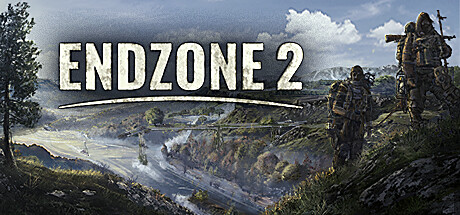
- In our relentless journey for survival, innovation isn't a luxury but a lifeline, urging us to wholeheartedly embrace trial and error as the very essence of progress. It's in this uncharted territory that we learn—only by daring to try, refine, and try again can we hope to thrive amidst the unforgiving realities of this world. -
Prototypes
Prototyping is a vital step that nearly every system and feature we create must undergo. Creating a prototype allows for faster iteration and early testing. It's not confined solely to Gameplay; we've employed it numerous times for our Foliage system, Expeditions, Look Development for Endzone 2, and more.
Prototypes also aid in focusing on our vision. Sometimes, a concept appears better on paper but doesn't translate well when put into action. To avoid falling into this trap, we emphasize experimenting with fewer limits to see if a feature fits and can be executed. This approach, especially in the case of Expeditions, was among the earliest prototypes we developed alongside the rest of EZ2's development.
Expeditions
We recognized that overhauling and enhancing the expeditions represented our primary goal. Early on, we opted for direct control of settlers during expeditions to counteract the dialogue-heavy and text-adventure gameplay of EZ1. Since we weren't sure if directly controlling settlers and solving puzzles would be enjoyable, prototyping Expeditions at the start of development was crucial.
We began with "white boxing," a term for placing non-textured and non-game-ready blocks to outline low-level design and grasp dimensions and gameplay. Testing with these basic elements allowed our game and content designers to iterate on playability while our artists simultaneously worked on the visuals, gradually replacing them until the finished mesh made its way into the game.
Very early white box of the construction site

Mid-Development state of the construction site

Final Implementation in the game

Look Development
In addition to gameplay, visual prototyping is always essential. Initially, we develop concepts, some of which we've already shared:
Early concepts of plateaus with fog in the valley to conceal the Badlands.

Early concept of the Badlands, previously referred to as the "Intermediate Area.

After conceptualizing, it was crucial to translate them into 3D to gauge scale, color, and materials in-engine. To accomplish this, we created a Look Development project specifically focused on refining the vision of the Badlands, keeping certain design principles in mind, such as the area once being flooded, a river dividing the environment, distinct foliage and colors compared to the plateaus, and displaying a dry version to prototype the drought visuals.
[previewyoutube=ssDFk8PfCVc;full][/previewyoutube]
Overgrowth Shader
Another early prototype we tackled was a procedural overgrowth and destruction effect for our assets. We needed a highly performant solution for altering any mesh, and employing a shader offered the best control over the look and resources used, applicable to any mesh.
[previewyoutube=ssDFk8PfCVc;full][/previewyoutube]
Vehicles
For a detailed breakdown of the vehicles in Endzone, check out our Developer Blog Post - The Badlands, Map Generation & Vehicles. However, as it was our first time introducing movable and controllable units, prototyping for the vehicles was necessary to facilitate early iteration.
Since realistic feedback on the suspension of the vehicles was crucial, we implemented the movement and animation of the wheels into a compute shader.
[previewyoutube=ssDFk8PfCVc;full][/previewyoutube]
Addition to the Look Development Segment:
Badlands Look Development in the moist or default state

Badlands Look Development in the drought state

A special thanks to our intern Timo, whose remarkable work focused on developing the prototypes for the expedition, overgrowth, and destruction. Amazing work, Timo!
Zitat:
In conclusion, relying on prototypes isn't just beneficial for starting new systems, gameplay, and visuals; it's crucial for ongoing iteration and testing. Even in the advanced stages of development, we continue creating and iterating prototypes while transitioning existing ones into the final game. This often necessitates a complete refactor or rebuild, but basing it on a prototype accelerates the process and ensure all design decisions embed well into each other and complement the whole game.
Note that not all features shown will eventually find their way into the game and are always subject to change! Some of the screenshots are very old and yet way more advanved. This Blog should mainly showcase our workflow and development decisions along the way!

https://store.steampowered.com/app/2144640/Endzone_2?snr=2_groups_partnerevents_

As Discord is our main platform for feedback and discussion within the community, we highly recommend joining us and sharing your feedback there.

